Conquering Africa’s highest peak, Mount Kilimanjaro, is a bucket-list adventure for many thrill-seekers. The Machame route, also known as the "Whiskey Route," is one of the most popular and scenic pathways to the summit. Over seven days, trekkers traverse lush rainforests, alpine meadows, and rugged terrain, testing their physical and mental limits. While the journey poses challenges like altitude sickness and unpredictable weather, those who reach the iconic Uhuru Peak are rewarded with breathtaking panoramas and a profound sense of personal achievement. But the true magic of this expedition lies in the camaraderie forged among fellow adventurers as they support one another through the highs and lows of the climb.
Good To Know
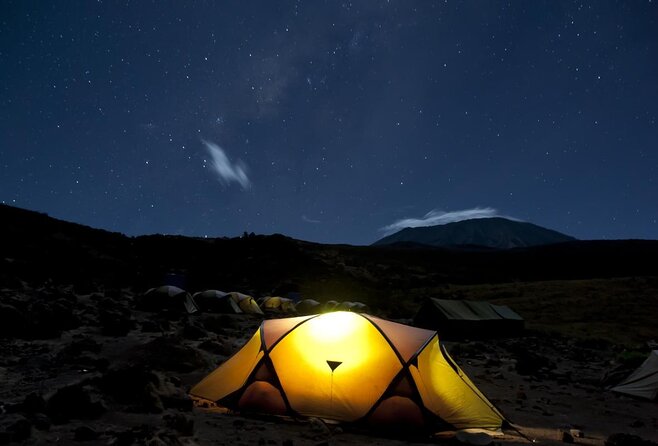
-
The Machame route, also known as the "Whiskey Route," offers diverse ecosystems and a gradual ascent, enhancing the trekking experience and increasing summit success rate.
-
Proper preparation, including fitness training, gear selection, and acclimatization to altitude, is crucial for a safe and enjoyable Kilimanjaro climb via the Machame route.
-
The 7-day Machame route trek features key milestones such as the Shira Plateau, Lava Tower, Barranco Wall, and the final ascent to Uhuru Peak, the highest point in Africa.
-
Successful summit of Kilimanjaro via the Machame route requires careful pacing, hydration, and energy conservation, especially during the challenging final ascent to the crater rim.
-
The descent from the summit can be as demanding as the ascent, requiring focused navigation and caution to ensure a safe and successful completion of the Kilimanjaro climb.
About the Machame Route

The Machame route, also known as the "Whiskey Route", is one of the most popular and scenic paths to the summit of Mount Kilimanjaro.
It’s a longer, more challenging route that offers stunning views and diverse landscapes. The trek begins in the lush rainforest, climbs through the moorland, and then traverses the rocky Shira Plateau before reaching the imposing Barranco Wall.
The route is considered more difficult than the Marangu route, but it provides a more rewarding and scenic experience. Hikers will encounter a variety of ecosystems, from tropical forests to alpine deserts, and have a better chance of reaching the summit due to the gradual ascent.
The Machame route is a popular choice for those seeking an adventurous and visually stunning Kilimanjaro climb.
You can also read our reviews of more tours and experiences in Moshi.
Preparing for the Climb
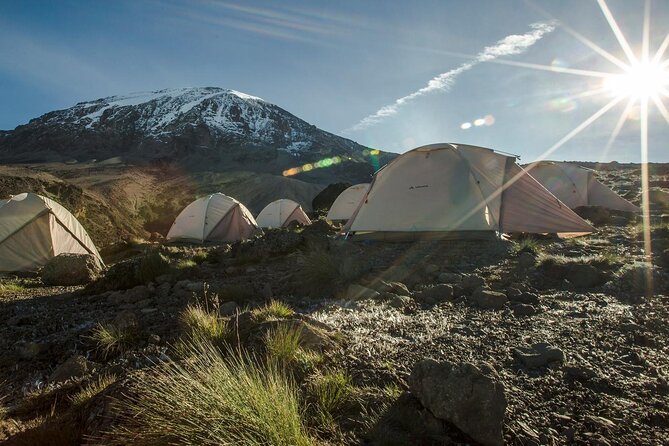
| Recommended Gear | Fitness Preparation | Safety Considerations |
|---|---|---|
| Hiking boots | Cardiovascular training | Acclimatization to altitude |
| Warm layers | Strength training | Proper hydration and nutrition |
| Rain/wind protection | Endurance building | Awareness of altitude sickness symptoms |
| Trekking poles | Flexibility exercises | Proper pacing and rest periods |
Proper planning and preparation are key to a successful Kilimanjaro climb. Hikers who take the time to get ready will have a more enjoyable and safer experience on the mountain.
Packing for the Trek
Packing the right gear is crucial for a successful Kilimanjaro climb. Climbers must bring warm, waterproof clothing, sturdy hiking boots, and a reliable headlamp. Layering is key to staying comfortable in the changing mountain conditions.
Plus, a good quality backpack, water bottles, and snacks are essential. Some important items to consider include:
- Trekking poles to ease the strain on joints.
- Sunscreen and lip balm to protect from UV exposure.
- First-aid kit for minor injuries.
- Personal medications and toilet paper.
Proper preparation and packing can make all the difference in completing the Machame route comfortably and safely.
Acclimating to the Altitude

Acclimating to the altitude is crucial for a successful Kilimanjaro climb. The mountain’s peak reaches over 19,000 feet, and climbers must allow their bodies time to adjust to the thinner air. Proper acclimatization prevents altitude sickness, which can be life-threatening.
The Machame route allows for gradual ascent, with several days spent at intermediate camps to help the body adapt. Climbers should also stay hydrated, avoid alcohol, and listen to their guides’ advice on pacing.
With patience and care, the body can acclimate, increasing the chances of reaching the summit. Acclimatizing takes time, but it’s an essential part of a safe and rewarding Kilimanjaro adventure.
Hiking the Machame Route
The Machame route is one of the most popular and scenic paths to the summit of Kilimanjaro. This challenging 7-day trek takes adventurers through diverse landscapes, from lush rainforests to barren alpine deserts.
The route is known for its gradual ascent, which helps climbers acclimatize to the altitude. Hikers will encounter several key milestones along the way, including:
- The Shira Plateau, offering panoramic views of the mountain.
- The Lava Tower, an iconic rock formation standing at 4,600 meters.
- The Barranco Wall, a steep scramble that tests climbers’ endurance.
- The Uhuru Peak, the summit of Kilimanjaro at 5,895 meters.
The Machame route’s varied terrain and gradual ascent make it a rewarding choice for experienced trekkers seeking an adventurous Kilimanjaro expedition.
Reaching the Summit
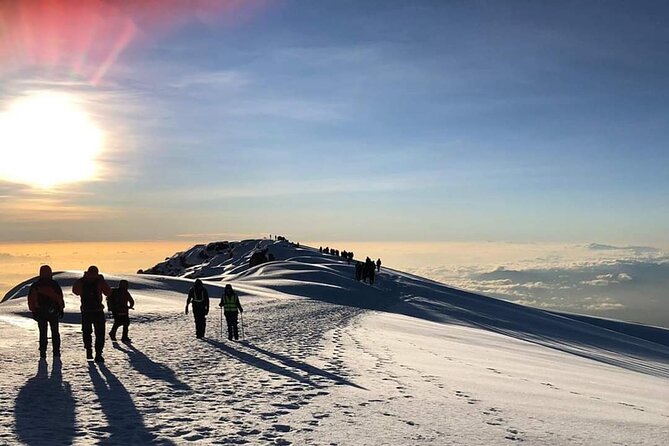
On the final day, climbers embark on an arduous push to the summit of Kilimanjaro. They wake up early, grabbing a quick breakfast before setting out.
The trail becomes steeper and more challenging as they near the top. Climbers must pace themselves, staying hydrated and taking breaks to conserve energy.
As they reach the crater rim, the views open up, revealing the stunning glaciers and landscapes. With a final push, they reach Uhuru Peak, the highest point in Africa.
Elation and pride fill the air as they celebrate their hard-earned achievement. The descent can be just as grueling, but the sense of accomplishment makes it all worthwhile.
Descending the Mountain
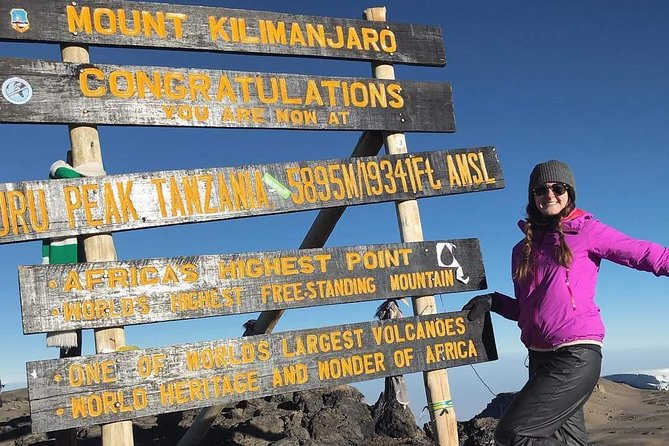
Descending the mountain often proves just as challenging as the climb up. Trekkers must navigate steep, rocky terrain with tired legs and weary minds. The descent requires steadfast focus and caution to avoid injury.
Key considerations for a safe descent include:
- Proper pacing to conserve energy
- Careful foot placement to minimize strain
- Use of trekking poles for stability and shock absorption
- Staying hydrated and fueled to maintain strength
Though physically demanding, the descent offers a sense of accomplishment and relief. Reaching the base camp signifies the successful completion of an arduous, yet rewarding, journey to the roof of Africa.
Assessing the Experience
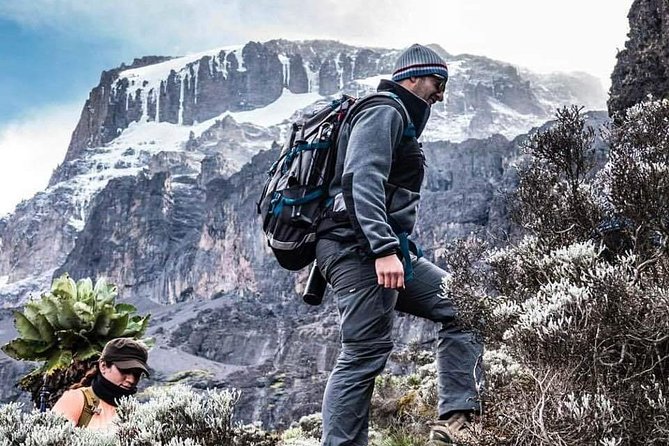
Upon reaching the base camp, climbers often reflect on the profound experience of summiting Kilimanjaro. The sense of accomplishment is immense, having conquered Africa’s highest peak through sheer determination and teamwork. Participants typically rate the overall experience highly, praising the breathtaking scenery, camaraderie, and sense of personal growth. Many consider the journey a once-in-a-lifetime opportunity that exceeds their expectations.
| Highlights | Challenges |
|---|---|
| Stunning vistas | Altitude sickness |
| Teamwork and bonding | Physically demanding |
| Personal achievement | Unpredictable weather |
Ultimately, the Kilimanjaro climb leaves a lasting impact on those who undertake it, inspiring a deeper appreciation for the natural world and their own resilience.
Frequently Asked Questions
What Are the Group Sizes for This Kilimanjaro Climb?
This is a private tour, so only your group participates. The group size is not specified, but it’s customized to your needs. You’ll have a personalized experience on your Kilimanjaro climb.
Are There Opportunities for Acclimatization Hikes During the Trek?
The Kilimanjaro trek includes acclimatization hikes to help climbers adjust to the high altitude. These hikes allow trekkers to ascend higher during the day and then descend to sleep at a lower elevation, aiding the acclimatization process.
What Is the Average Daily Distance Covered on the Machame Route?
The average daily distance covered on the Machame route is around 6-9 km. This varies as the route is designed to allow for gradual ascent and acclimatization, with some days being shorter and others longer to reach the summit.
Can I Rent Gear Locally or Do I Need to Bring Everything?
Travelers can rent gear locally from the tour provider or gear suppliers in Moshi. This saves the hassle of bringing everything, and ensures the equipment is suitable for the Kilimanjaro climb.
How Difficult Is the Descent From the Summit Compared to the Ascent?
The descent from the summit is generally considered easier than the ascent. While it’s still physically demanding, the downhill trek is easier on the body and less technically challenging than the climb up.
The Sum Up
The 7-day Machame Route up Kilimanjaro is a challenging yet rewarding trekking experience. Climbers face altitude sickness and changing weather, but the stunning scenery and sense of accomplishment at reaching the summit make it worthwhile. The gradual ascent and diverse ecosystems encountered along the way contribute to a transformative journey, fostering camaraderie and personal growth among fellow adventurers.
More 7-Day Experiences in Moshi
More Tour Reviews in Moshi
Not for you? Here's more nearby things to do in Moshi we have reviewed
- Day Trip To Tarangire National Park
- Mountain Kilimanjaro Climbing 6 Days Machame Route
- 6 Days Rongai Route Climbing Mt.Kilimanjaro
- 7-Day Kilimanjaro Climb Machame Route
- 7-Days Tour Mount Kilimanjaro Trekking via Machame Route
- Kilimanjaro: Lemosho Route and Camping Safari
- 8 Days 7 Nights Private Lodge Safari
- 5 Days Comfort Safari in Tanzania
- 2 Days Lodge Safari.
- One Day Tanzania Safari – Tarangire or Arusha National Park
- Day Trip Lake Manyara
- Mt.kilimanjaro-machame Route
